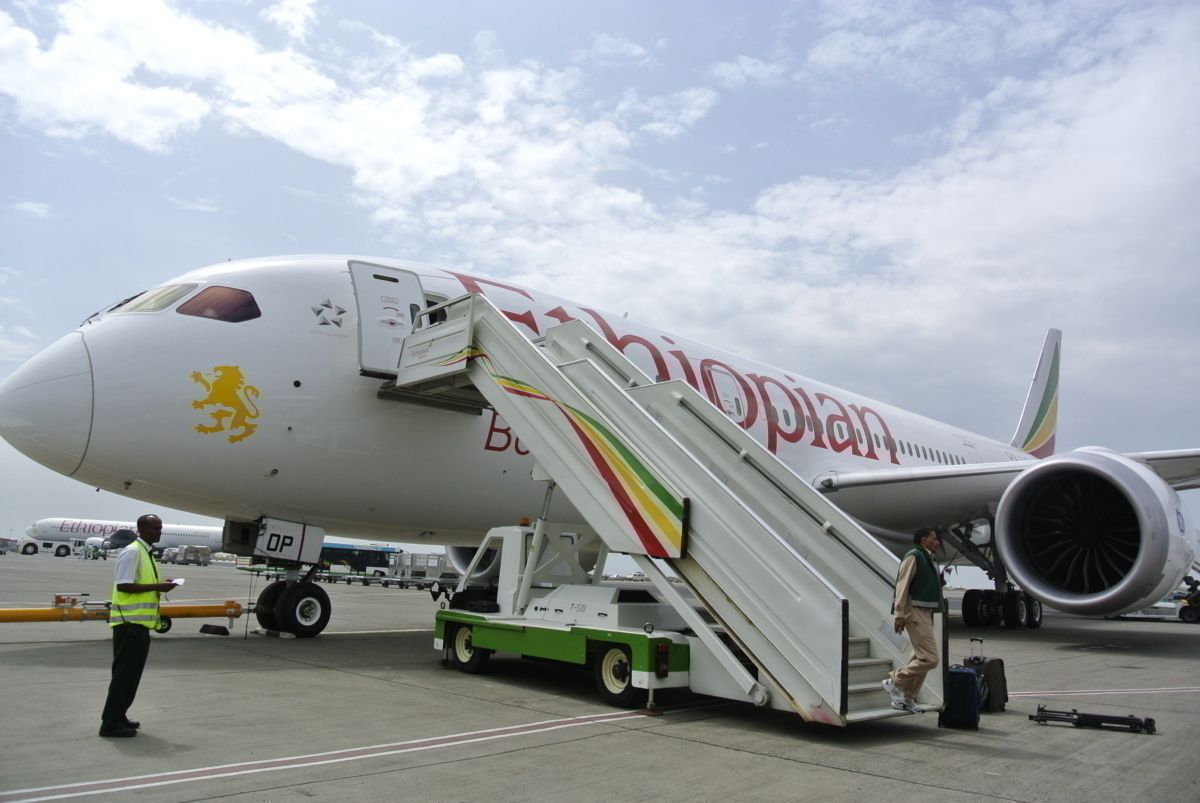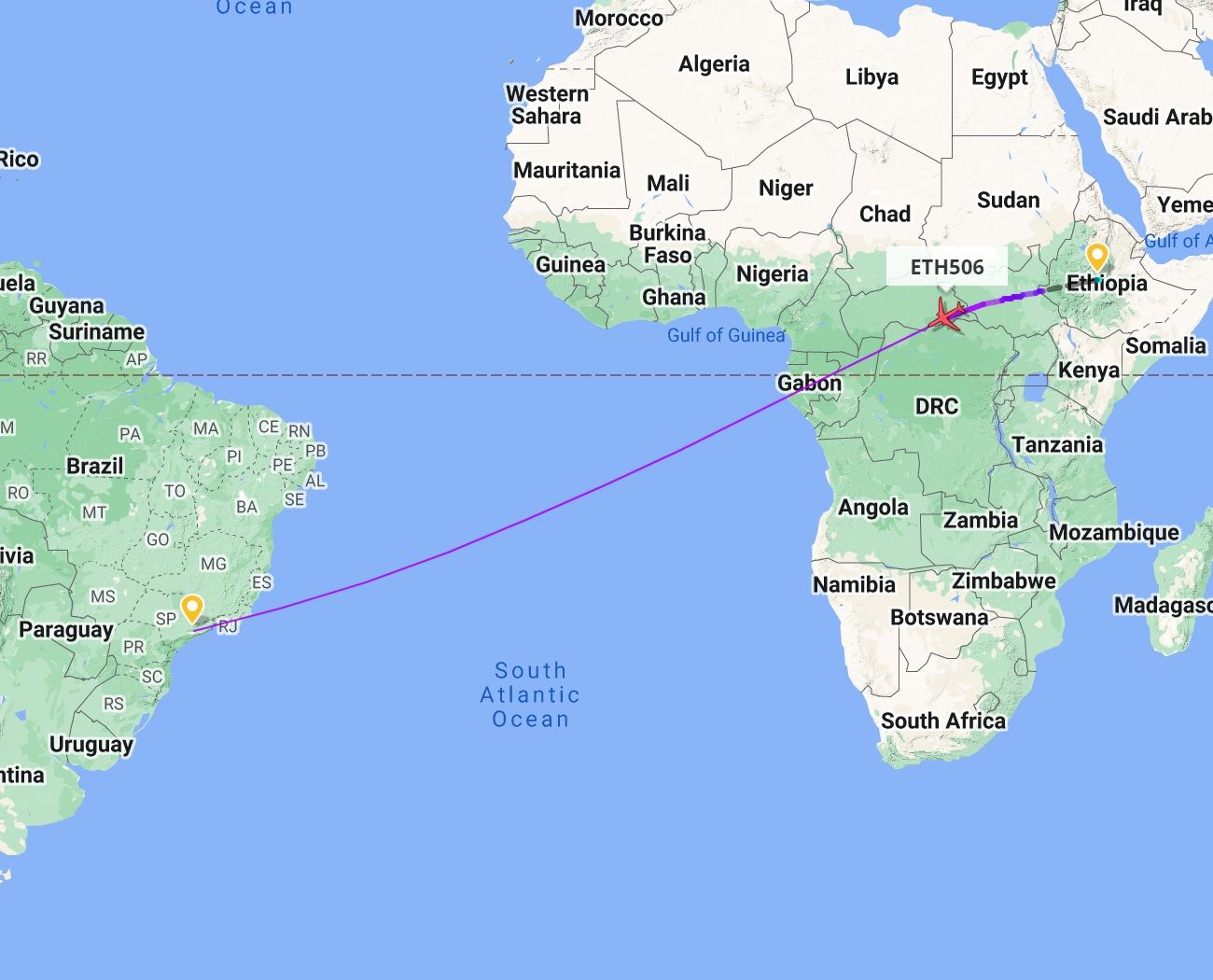Ethiopian Airlines will increase São Paulo – which continues to Buenos Aires – to 1x daily from October 16th, up from the current 5x weekly. João Pita, CCO of São Paulo Guarulhos, described the development on LinkedIn as "a true milestone for the airport and for Ethiopian."
Having started passenger service to São Paulo in July 2013 and Buenos Aires in March 2018, analyzing schedules information from OAG shows that there has been only a handful of times that they've been served 1x daily, most recently in January 2019.
What's happening?
In a month and a half, Ethiopian Airlines will return its long passenger route to South America to 1x daily. It'll remain at that frequency until the end of March. It means that the aviation Southern Hemisphere summer season, when demand is highest, will have the most capacity as you'd expect. Come April, and as winter kicks in, it'll reduce to 5x weekly.
The schedule is as follows, with all times local. Note that the airline has fifth freedom traffic rights between the two Latin American airports.
- Addis Ababa to São Paulo: ET506, 10:05-16:15 (12h 10m block time)
- São Paulo to Buenos Aires: ET506, 17:30-20:25 (2h 55m)
- Buenos Aires to São Paulo: ET507, 21:55-00:30+1 (2h 35m)
- São Paulo to Addis Ababa: ET507, 01:45-19:45 (12h)
The one-stop route, some 7,240 miles (11,652km) to Buenos Aires, will continue to use the B787-8, the Star Alliance member's most numerous widebody variant. Averaging 7.8 years, they all have 270 seats, there are 24 fully flat business seats and 246 seats in economy. The B787-8 has the joint-fewest business seats of the airline's other widebodies, alongside the B767-300ERs, which are now mainly used within Africa and will be turned into freighters.
Stay aware: Sign up for my weekly new routes newsletter.
Brazil and Argentina
São Paulo and Buenos Aires are good for not just targeting Africa passengers and cargo but fundamentally also those bound for the Middle East and Asia generally.
Booking data shows that, in 2019, the last year unaffected by coronavirus, point-to-point (P2P) demand was minuscule. If Ethiopian Airlines relied only on P2P passengers (excluding fifth freedom), it'd have had a seat load factor of around 8%, such is the obvious importance of transit and 'bridging' passengers. Thanks to Ethiopian Airlines' codeshare with Azul, over a fifth of passengers 'bridged' both São Paulo and Addis Ababa hubs; perhaps you'd not guess that more people flew Quito-São-Addis-Windhoek than anywhere else, although it was still a tiny market.
According to booking data, around 70% of passengers transited Addis Ababa, with three times as many to/from São Paulo as Buenos Aires.
Discover more aviation news.
Where did passengers go?
As the departure and arrival times of ET506/ET507 in Ethiopia as primarily designed to connect to the Middle East and Asia, it should not be surprising that these were the main markets. Indeed, over half of São Paulo/Buenos Aires passengers transited to/from Asia, growing to three quarters when the Middle East is added.
Of course, China was the largest country market, with approximately two and a half times as many passengers as number two, Israel. Both were primarily driven by São Paulo, as reflected in the following top 10 markets. Notice only one was in Africa:
- São Paulo to Shanghai
- São Paulo to Tel Aviv
- São Paulo to Guangzhou
- São Paulo to Tokyo
- São Paulo to Lagos
- Buenos Aires to Bangkok
- São Paulo to Bangkok
- São Paulo to Beirut
- Buenos Aires to Delhi
- São Paulo to Dubai
What is the longest Ethiopian Airlines route you've flown? Share your experience in the comments.



